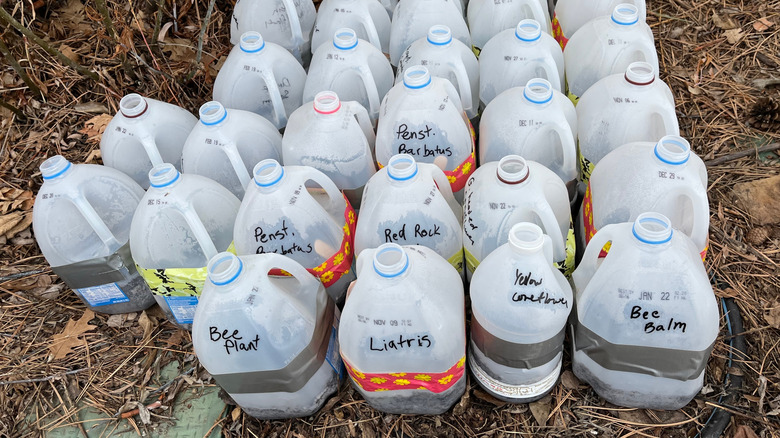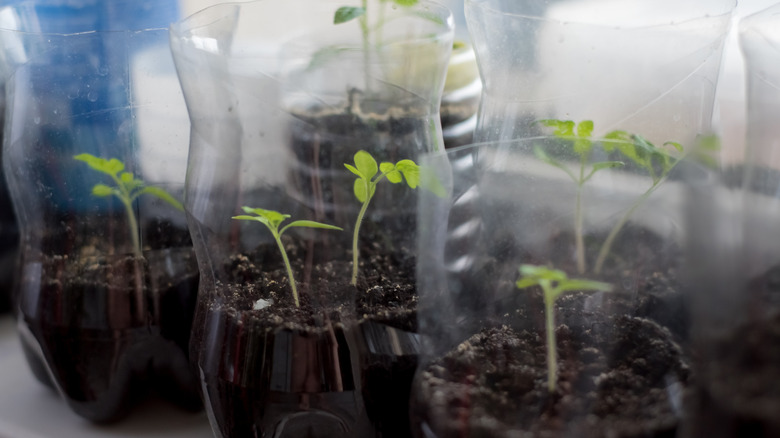The Container Mistakes That Will Prevent Your Winter Sown Seeds From Sprouting
In areas that experience freezing cold winters, some seeds that need a chilling period will perform well when planted outside in January or February. This method — what's known as winter sowing — isn't foolproof, however. If you find yourself in troubleshooting mode, inspecting your seed-starting setup and consulting expert tips for winter seed sowing are sensible first steps. Sometimes, seeds sown into containers won't germinate until you make a few adjustments. Using containers that aren't suited for winter sowing and forgetting to add drainage holes are two common problems. You may also need to check your containers' lids. If a lid flies open at the wrong time, it might expose seeds and seedlings to challenges they're not ready to handle. A quick knowledge infusion can help remedy all of these issues.
When selecting containers for winter-sown seeds, remember that you're trying to create a greenhouse-like environment for plant growth. Also, remind yourself how tall and deep your seedlings might grow. The bottom of each container should be able to hold 3 to 4 inches of seed-starting mix. Opaque milk jugs and clear soda bottles usually work well since they give the roots adequate space to expand and deliver plenty of sunlight to the seeds. Plastic salad containers can also work if they're deep enough. Gallon-sized milk jugs typically need a half dozen drainage holes. Punch them into each jug's bottom with a paring knife or screwdriver. Doing this task with a thin object such as a sewing needle may produce holes that are too tiny to release water efficiently.
Container modifications and other tweaks to try
Strategically modifying a milk jug or soda bottle can help your winter-sown seeds sprout. If you haven't added ventilation holes, see if this encourages your seeds to germinate. You can make them the same way as drainage holes, but place them on the upper portion of the container. Then, ensure that your container's lid is easy to open and close but won't fly off on windy days. One popular approach involves cutting your milk jug in half horizontally to create a lid you can flip open and shut. Leave a few inches uncut and reinforce the area with duct tape, then secure the lid with more tape. Place your container somewhere it's shielded from strong winds.
When outdoor temperatures are mild, open your container's lid for part of the day. This keeps the environment inside from overheating, another problem that can keep your winter-sown plants from surviving. If you've planted tomato seeds or other annuals that won't tolerate frost, bring your container inside temporarily if the weather gets unseasonably cold. It's also wise to sow these seeds in late winter, when extremely cold temperatures are less likely.
If you've made all of these tweaks but are still struggling with seed sprouting, the problem might stem from something other than your containers. In this case, be sure you're planting your seeds far enough apart, using a growing medium that's lightweight and nutrient-rich, and watering the seeds before closing each container's lid. Also, review which vegetable and flower seeds you can plant in winter for a beautiful spring garden and which ones are unlikely to thrive in chilly outdoor conditions.

